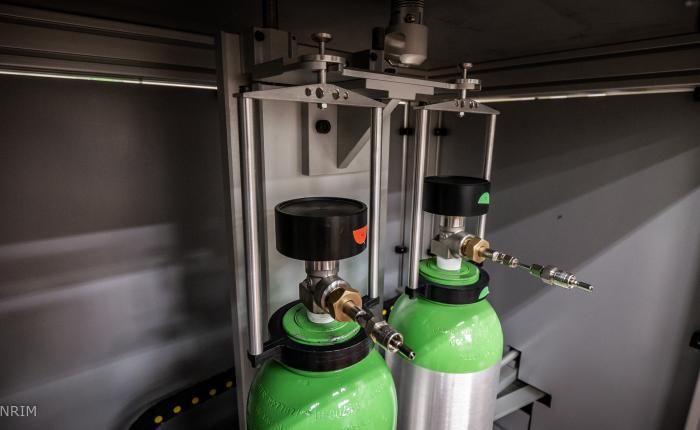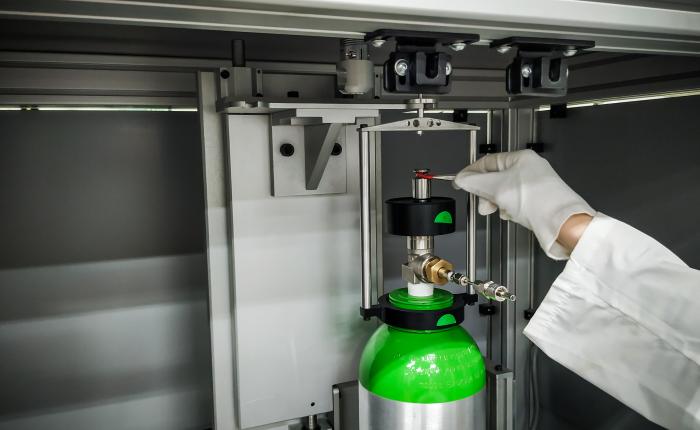The definition of the mole, SI base unit of amount of substance, is as follows:
The mole, symbol mol, is the SI unit of amount of substance. One mole contains exactly 6.022 140 76 × 1023 elementary entities. This number is the fixed numerical value of the Avogadro constant, NA, when expressed in the unit mol–1 and is called the Avogadro number.
The amount of substance, symbol n, of a system is a measure of the number of specified elementary entities. An elementary entity may be an atom, a molecule, an ion, an electron, any other particle or specified group of particles.
The most accurate realization of the mole results from an experiment that led to the determination of the Avogadro constant, carried out within the framework of the International Avogadro Coordination. This experiment involved the determination of the number of 28Si atoms in a single crystal of Si, enriched in 28Si, using volumetric and X-ray interferometric measurements. It allows the definition of the mole to be realized with a relative standard uncertainty below 2 × 10–8 in a single crystal of Si, enriched in 28Si.
This primary realization of the mole is the “state of the art” in determining the number of entities in a macroscopic sample, and hence the amount of substance in that sample. However, it differs from methods generally used to realize the mole. In practice, chemical measurements require the realization, across all types of chemical entities, of derived units involving amount of substance that are relevant to practical chemical measurements, such as the amount of substance concentration (mol/m3), the amount of substance content (mol/kg) or the amount of substance fraction (mol/mol). These realizations may be done by a variety of primary methods of measurement, including the gravimetric method.
The gravimetric method is commonly used because measuring the mass of a sample is relatively simple and accurate. The knowledge of the mass fraction of the involved substance is a prerequisite for its use.
When very high purity substances are available, the uncertainty in the determination of the mass is often the limiting factor and the mole may be realized with a relative standard uncertainty of less than 1 × 10–6. There are relatively few substances where the mass fraction of the substance (traditionally called its “purity”) can be assigned with sufficiently small uncertainty to permit a realization of the mole with such a small uncertainty.
At INRiM, primary realizations of amount of substance fraction (mol/mol) of gases are currently realised by the gravimetric method and concern carbon dioxide and nitrogen oxides in matrices of nitrogen or synthetic air. The activity is carried out within the Applied thermodynamics sector.

